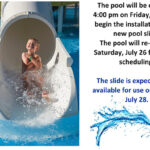Home »

Booze, water and boats a bad mix

British Columbia is heading to a season it would like to eliminate.
August is the worst month of the year for boating and swimming fatalities in the province and alcohol and drugs play a role in the deaths of 40% of people who perish on the province’s waterways.
Two recent drowning-related fatalities last weekend served as a “sobering reminder that this is the peak season for water-related deaths in the province,” stated the Ministry of Public Safety and Solicitor General and BC Coroners Service in a July 19 press release.
In conjunction with National Drowning Prevention Week (July 16-23), the BC
Coroners Service (BCCS) wants to remind everyone to practice water safety this summer. Statistics show that July and August have the highest number of drowning deaths. The BCCS reported 43 water-related fatalities last year.
The majority of incidents involved males (88%) and adults between the ages of 20 and 29 (23%). Almost half of the fatalities took place on lakes, while nearly one-quarter were on rivers. The majority of deaths occurred while boating (44%) and swimming (25%).
Forty per cent of people who die on the water in B.C. are under the influence of alcohol, drugs or both, the BCCS reported.
Thirty-seven per cent of boating and water fatalities occurred in the Interior, with the Okanagan being the hot spot for water-related fatalities. Kalamalka Lake and Okanagan Lake each had three fatalities last year, while Shuswap Lake and Harrison Lake had two each.
The following are tips for staying safe on the water this summer:
* Never consume alcohol before or during swimming, boating or other water activities.
* When boating, ensure everyone is wearing an appropriately sized PFD/lifejacket, and that the operator has his or her Pleasure Craft Operator Card.
* Closely supervise children when swimming, bathing or playing around water – even those who can swim.
* Be cautious about swimming in currents, and know what to do if you get into trouble.
* If you have a backyard pool, ensure it is fenced on all four sides with a self-closing, self-latching gate. When not using your pool, clear all toys out of the water and away from the edge, so they cannot tempt children to the water’s edge.
* Know how to respond in an emergency by taking First Aid/CPR training.
e-KNOW







